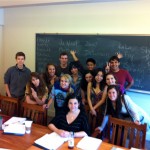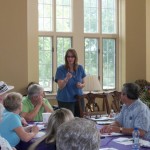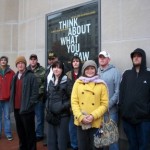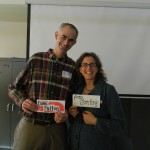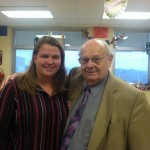IEFA, Culture, and Crossroads
Forums › 2023 Summer Seminar › Becoming a Holocaust Educator 2023 Summer Seminar Responses: due JUNE 18 (or earlier) › IEFA, Culture, and Crossroads
-
AuthorPosts
-
-
June 17, 2023 at 7:08 pm #31874
The introduction reminded me of some important Writing Project practices that I have always loved and benefited from as a learner. Specifically page 3 explains the intensity of the seminar that is “difficult to describe;” that statement made my heart skip a few beats in fond anticipation. I have participated in 2 Writing Project summer seminars and co-taught 2. Each and everyone of them have been times of personal and professional growth for me and I come home energized for a new year of teaching. I am so excited to have another experience with the writing project!
Being a Holocaust educator is a calling and commitment as the introduction points out on page 5: “Holocaust can open up feelings of vulnerability…” This type of vulnerability is exactly what Brenda Johnston encounter when she began learning and teaching about the Holocaust. I chose to read Brenda’s chapter, “Finding Myself Through Holocaust Education and Montana’s Indian Education for All.” I had the privilege of meeting Brenda and learning from her in Billings during the Worlds Apart but Not Strangers seminar. I was impressed with her use of primary source material concerning the Baker Massacre and the connection she and her students made with the Holocaust. It lit a fire in my soul as I teach in a district that has a high population of Native students (many that come from Brenda’s reservation in Browning). I have to admit that I haven’t done a stellar job doing this in my classroom; reading Brenda’s chapter has reminded me of that spark and made me think of ways I might be able to work with my new curriculum resource to make the relevant connection with IEFA.
Brenda Johnston’s chapter was actually the last chapter I read – I actually started with chapter 4 then went to chapter 3, and ended with chapter 2. I cannot explain why I did this; it was not intentional. I was drawn to the title of chapter 3, “Culture Before Content: Generating Empathy Through Testimony.” My takeaways from this chapter included a student definition of choiceless choices: ” Someone’s given a choice, but it doesn’t matter which choice they make, there’s gonna be the same outcome” (45). I also appreciate how he gets his students to look at testimonies and the principles of economics – what a novel idea! Finally, Peter challenges students to look at the incentives behind peoples’ actions. He cites Jane Fonda’s testimony about her involvement in the anti-war movement during the Vietnam War. What he and his students gained from her testimony was nice, but there is another story that that account did not have. We have a very dear friend that is a friend of a man that was in a POW camp that Ms. Fonda visited. The commander of that camp spent weeks fattening up the prisoners for her visit and when she was going down the line shaking the hands of the POWs one of the prisoners slipped her a note with all the names of the people imprisoned there. At the end of the line, Ms. Fonda gave that slip of paper to the commander of that camp and subsequently several prisoners were severely beaten, some to death. She may not have been “anti-soldier” as Peter points out, but she was certainly naive, and in this case her naivety cost men their lives.
Chapter 4, ” Instructional Crossroads,” confirmed my belief that we always need to seek more knowledge and it challenged me again to be the one to provide a foundation for my students and then to get out of their. Cory Harbaugh allows students to guide the questions which creates a genuine relevancy for those students. The “crossroads” he writes about are the points where we meet students as learners and progress toward new learning together. That learning takes place by investigating sources from multiple perspectives. I have found this technique very useful to my students and to me personally. For example, viewing a photograph from the subject’s perspective, the observer’s perspective, and the photographer’s perspective is significantly more interesting than just glancing at a photograph.
I wish I had more time to read this whole book. It is beautifully put together and will certainly be a great resource for me. Thank you Jennifer and Alexander for putting all of these teachers together to share their expertise!
-
-
AuthorPosts
- You must be logged in to reply to this topic.
Recent Replies
Recently Active
-
Active 12 hours, 22 minutes ago
-
Active 2 days, 15 hours ago
-
Active 1 week ago
-
Active 1 week, 4 days ago
-
Active 1 week, 5 days ago
- View All Members

